1. Riding in Cars Without Seat Belts
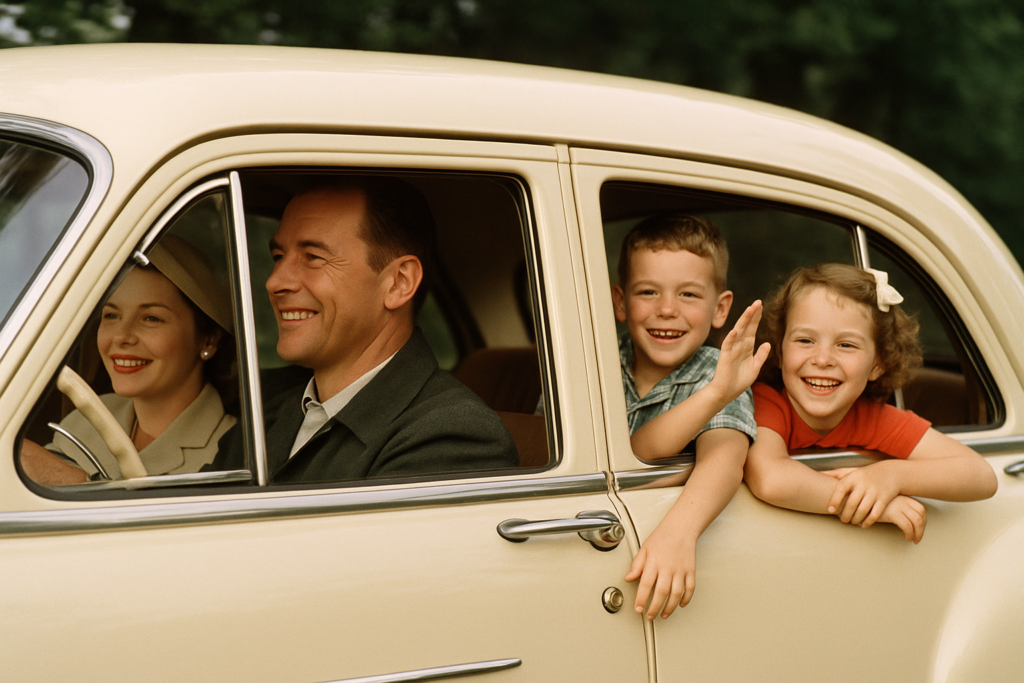
In the 1950s, car rides were a free-for-all. Seat belts were optional features in most vehicles and rarely installed unless you had a particularly safety-conscious parent. Kids often sat loose in the backseat, perched up front next to the driver, or even stood on the seat to look out the window. It wasn’t unusual to see siblings sprawled across laps or lying in the rear window shelf like cats sunbathing. Babies rode in laps, toddlers stood up during turns, and no one thought twice about it. The idea of being “strapped in” was reserved for airplanes or roller coasters, not everyday drives to school or the grocery store.
It wasn’t until Ralph Nader published his 1965 book Unsafe at Any Speed that the public began taking auto safety seriously. New York became the first state to require seat belts in 1984, decades after the first lap belt was introduced by Nash Motors in 1950. Before that, car safety was more of a suggestion than a rule. Parents were more likely to say “Hold on tight” than click anything into place. Today, riding without a seat belt is not just illegal in most states, it’s considered downright reckless. But for a kid in 1955, nothing beat the feeling of standing up in the backseat with your arms out the window and the wind in your face.
2. Buying Cigarettes or Being Sent to Buy Them
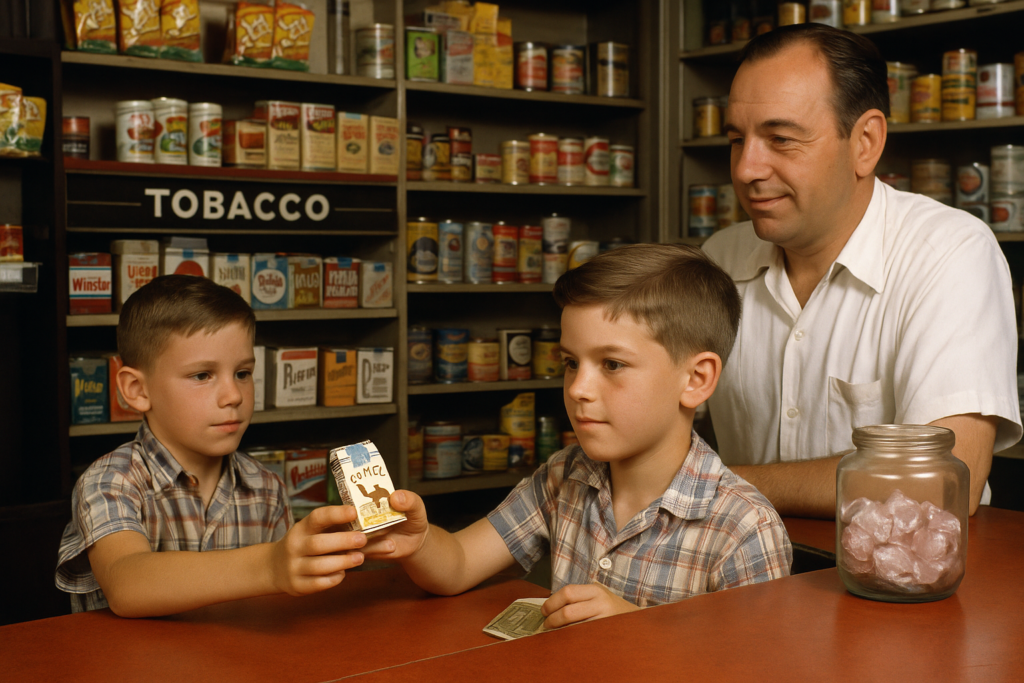
It was completely normal in the 1950s for a kid to walk to the corner store and buy a pack of cigarettes, for their parents, of course. A handwritten note or a familiar nod from the shopkeeper was enough to complete the transaction. Some kids even knew how to light one up and keep it burning until they got home. Cigarette brands like Lucky Strike, Camel, and Chesterfield were as common in households as bread or milk, and kids could recite ad jingles like “More doctors smoke Camels than any other cigarette” without realizing how bizarre that sounds today.
This was the golden age of tobacco marketing, with endorsements from athletes, actors, and even medical professionals. It wasn’t until the 1964 Surgeon General’s report linked smoking to lung cancer that serious public pushback began. Laws restricting cigarette sales to minors didn’t roll out widely until the 1980s and 90s. But in 1955, a child buying cigarettes wasn’t scandalous, it was an errand. If a kid sneaked a puff, parents shrugged and chalked it up to curiosity. Today, such a scene would trigger a flurry of social media outrage and possibly a visit from child protective services.
3. Playing With Lawn Darts
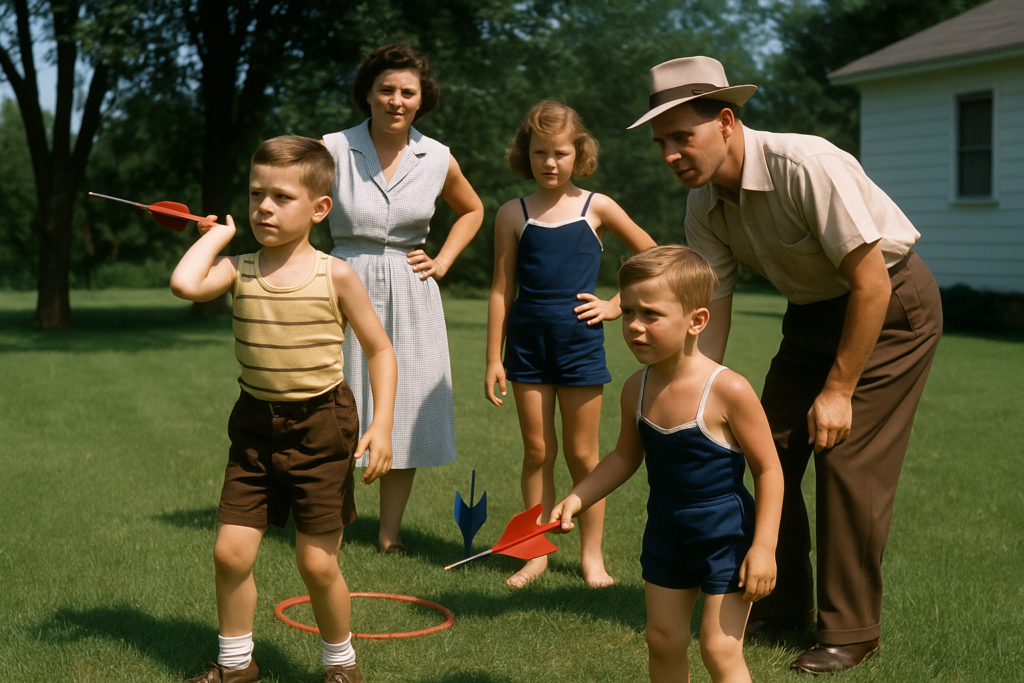
Lawn darts, or Jarts as the brand was called, were a summer staple in mid-century backyards. These weren’t the plastic toys you find in stores today, they were metal missiles with sharp points, designed to be thrown high into the air and land inside plastic rings. Kids played barefoot, often dodging incoming projectiles mid-game, laughing like it was all part of the fun. Accidental foot stabbings were common, and ER trips weren’t unheard of. It was dangerous, yes, but also thrilling in that way only 1950s childhood games could be.
The Consumer Product Safety Commission didn’t issue an official ban until 1988, after reports of three child deaths and over 6,100 emergency room visits related to Jarts injuries. But long before that, parents were already hiding them in the garage after one too many close calls. Yet kids kept dragging them out again, because no one wanted to be the house with the boring backyard toys. Today, just owning a set of original Jarts is considered a liability. But back then, they were as common as Slip ‘N Slides and wiffle bats, and about ten times more exciting.
4. Getting Paddled at School
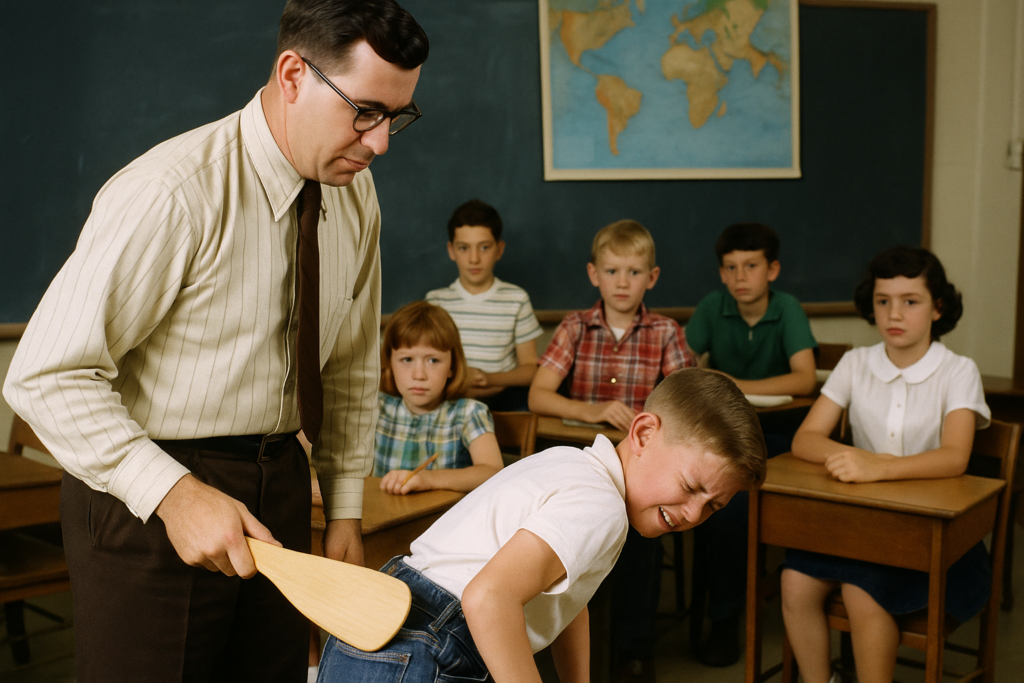
Back in the 1950s, misbehaving at school didn’t mean a call home or a detention slip, it meant getting whacked with a wooden paddle, often in front of the entire class. Corporal punishment was not only legal, it was expected. Teachers kept paddles on display as deterrents, sometimes even with holes drilled into them for extra sting. Kids feared “the paddle” almost as much as failing a test, and some classrooms had a designated corner just for punishments.
Many parents supported this practice, viewing it as part of a teacher’s authority rather than abuse. The idea was that swift consequences built character, and if a child came home teary-eyed from a paddling, they were likely to get scolded again for causing trouble in the first place. As of 2025, corporal punishment is still legal in 19 U.S. states, but the practice has declined significantly. Today, even raising your voice at a student can result in disciplinary action for the teacher. But in 1955, a paddling was just part of a typical school day.
5. Running Errands Alone at Age Six
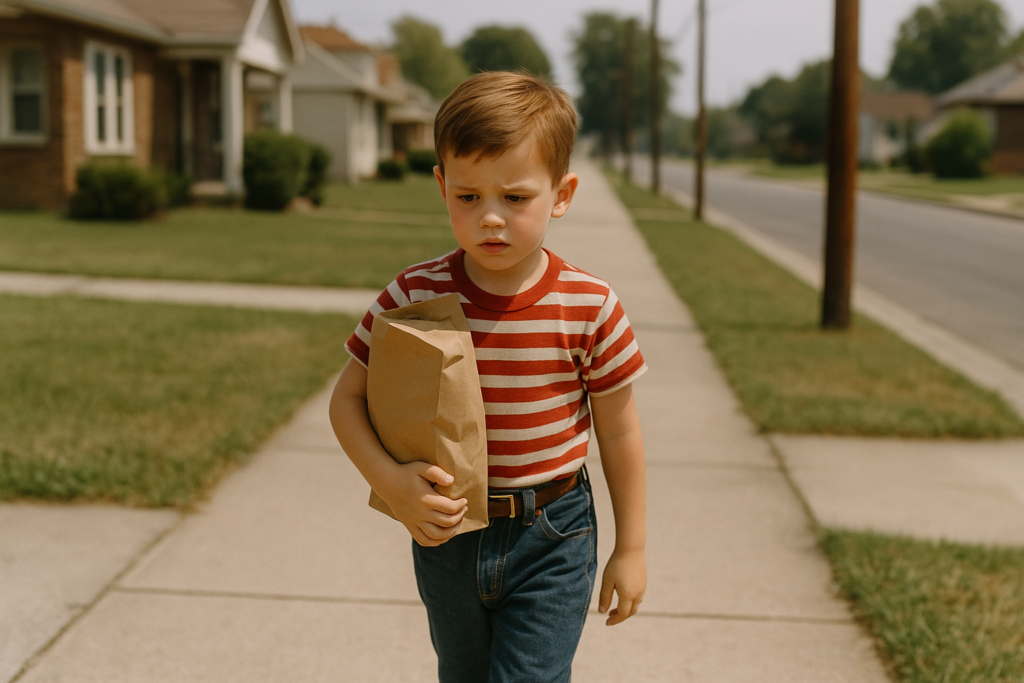
Children in the 1950s were expected to be self-sufficient early. By age six or seven, it was perfectly normal for a kid to walk alone to the grocery store, carry home a sack of potatoes, or fetch the family’s dry cleaning. Moms handed over a handwritten list and a few crumpled dollar bills, confident their child would cross streets, talk to adults, and return without a scratch. There were no cell phones, no GPS trackers, and usually no supervision. Just trust, community, and a strong sense of independence.
Kids memorized phone numbers, knew how to make change, and could be gone for hours without causing panic. The world was considered safer, or at least, less suspicious. Lenore Skenazy’s “Free-Range Kids” movement wouldn’t launch for another half-century, but in many ways, 1950s kids were the original free-rangers. Today, letting a first grader walk to the store alone might get you reported. But back then, it meant your child was growing up, and doing their part for the household.
6. Riding Bikes Without Helmets
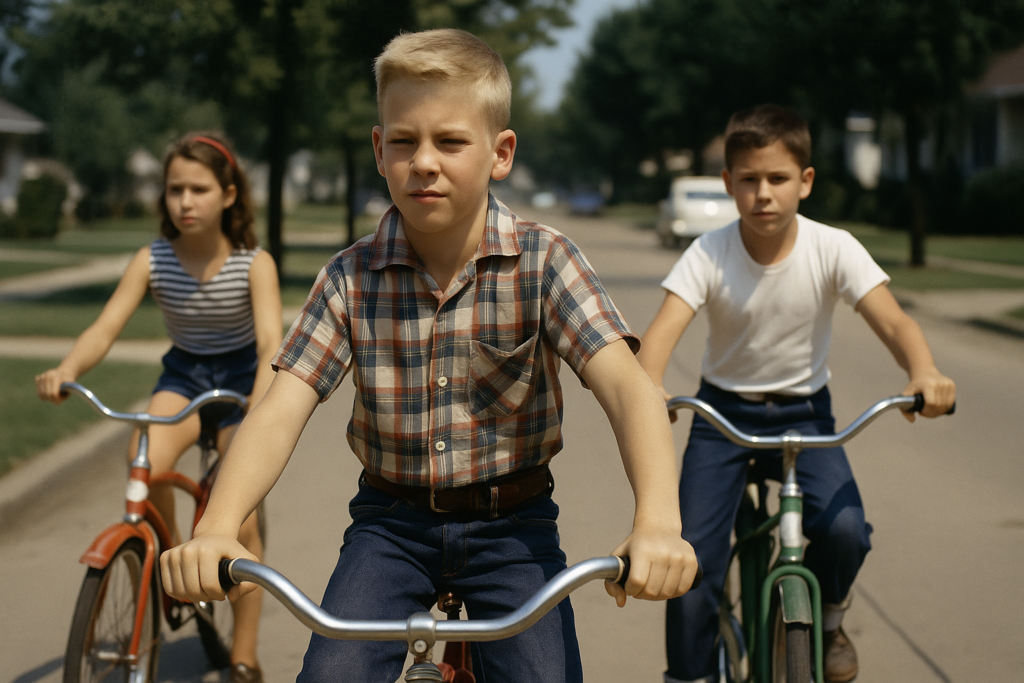
Every neighborhood in the 1950s had its own bike gang of scrappy kids tearing down sidewalks and popping wheelies on banana-seat Schwinns. No one wore a helmet. No one even thought about it. Bike riding was a rite of passage and often a child’s first taste of freedom. Parents might warn you not to ride after dark or to watch out for cars, but safety gear wasn’t part of the conversation. Skinned knees, chipped teeth, and gravel rash were considered badges of honor.
It wasn’t until the late 1980s that helmet laws for kids began to appear, starting in California. The first commercially successful bike helmet didn’t even arrive until Bell Sports launched one in 1975. Before that, it was just you, your bike, and the open road. Today, kids are more likely to be padded up like miniature linebackers before they’re allowed to ride. But in 1955, your only real concern was making it home before the streetlights came on.
7. Using Chemistry Sets With Uranium
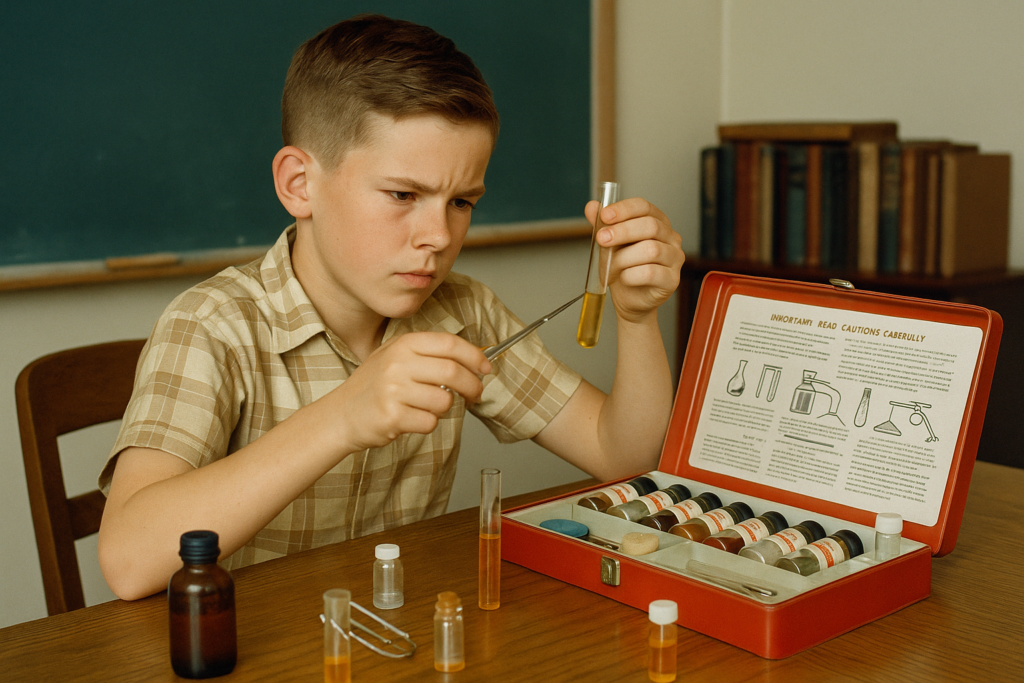
Science was cool in the atomic age, and surprisingly radioactive. The Gilbert U-238 Atomic Energy Lab, released in 1950, came with real uranium ore, a Geiger counter, a cloud chamber, and four different radioactive samples. Marketed as both educational and patriotic, the kit encouraged kids to “learn the secrets of atomic energy” right from their bedroom floor. It sold for $49.50, which would be over $600 today, making it one of the most expensive toys on the market.
Parents thought it was a great way to raise future scientists during the Cold War. The kit was short-lived and pulled from shelves by 1951, partly due to public unease and partly because it was too pricey for most families. Still, thousands of them were sold. Today, giving a child uranium, even in trace amounts, would be unthinkable. But in 1955, radioactive playtime was just another way to get ahead in science class.
8. Drinking Full-Sugar Soda at School
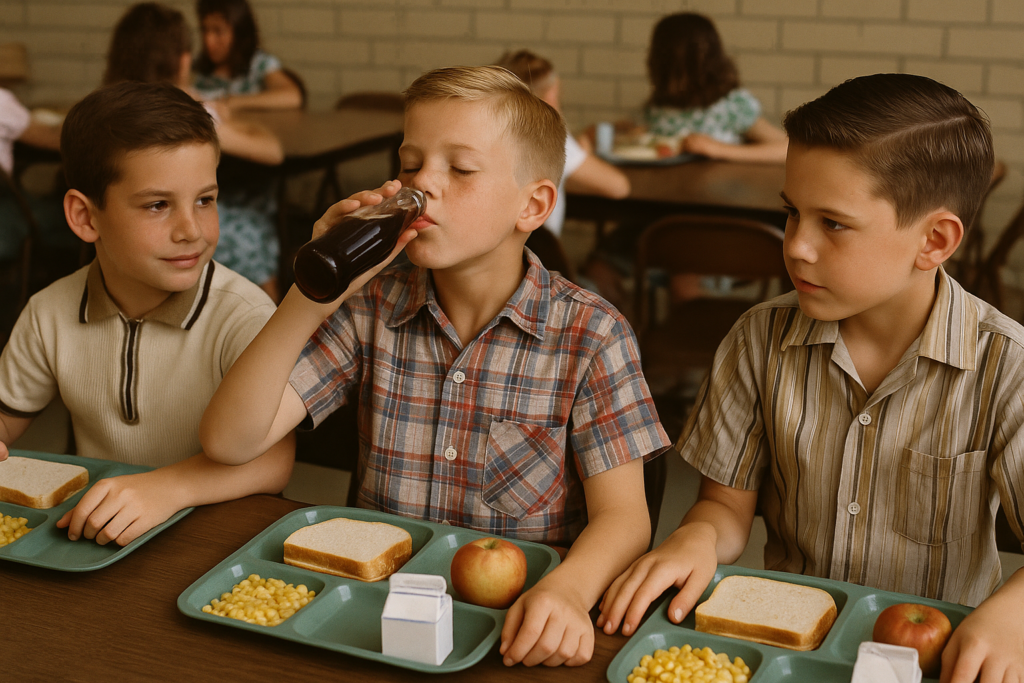
Coke, Pepsi, RC Cola, if it had sugar and fizz, it was welcome in 1950s schools. Kids packed bottles of soda in their lunchboxes or bought them at school canteens without a second thought. There were no restrictions, no nutrition guidelines, and certainly no judgment. It wasn’t uncommon to drink two or three a day, often chased with candy or a cream-filled snack cake. If a teacher saw it, they might just ask for a sip.
No one worried about caffeine, sugar content, or childhood obesity. In fact, the first diet soda, Tab, didn’t hit the market until 1963. Labels didn’t list ingredients or calories, and soda was seen as a harmless indulgence. Today, many schools ban sugary drinks entirely or limit them to special events. But for kids in 1955, a cold bottle of Coke with a straw in it was part of the school lunch routine, right next to your peanut butter sandwich and apple.
9. Sitting in Smoke-Filled Rooms
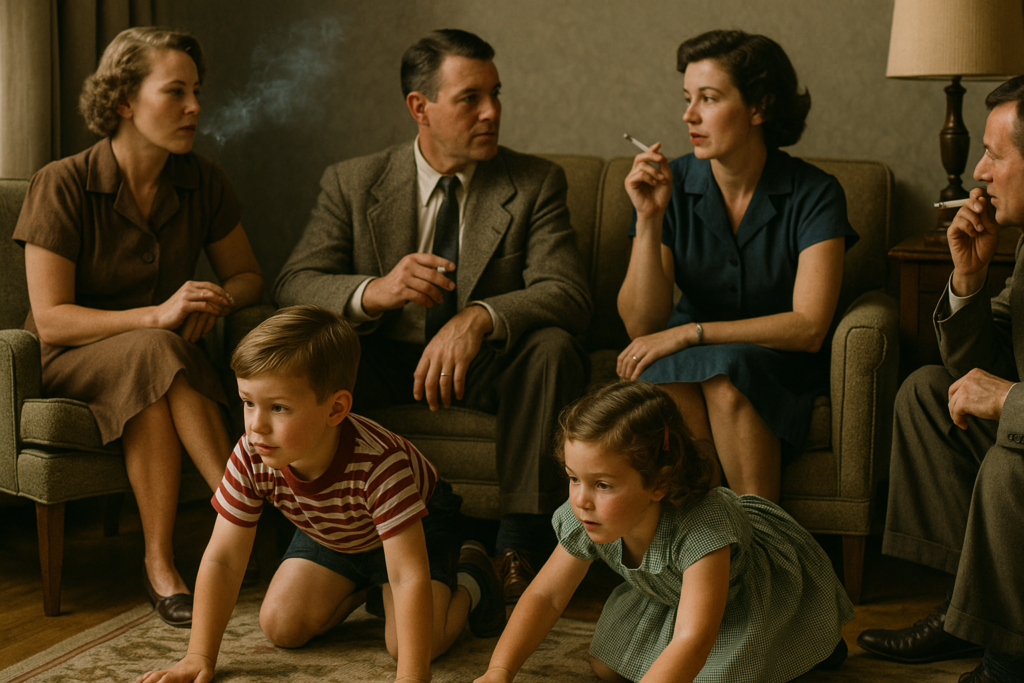
If you were a child in the 1950s, secondhand smoke was unavoidable. Parents smoked in the living room, at the dinner table, and in the car with the windows rolled up. Restaurants had ashtrays at every booth. Even hospitals had smoking lounges. You could barely walk into a public building without smelling tobacco. Kids learned to wave the smoke away or fan it with a napkin while eating.
Cigarette ads were everywhere, often featuring doctors, athletes, and glamorous actresses. It wasn’t until 1964 that the Surgeon General issued a report linking smoking to cancer, and it took decades for smoking bans to take hold. Airlines began phasing out smoking on domestic flights in 1988, and by 2000, it was banned on nearly all routes. Today, exposing a child to secondhand smoke can lead to legal trouble. But in 1955, smoke was just part of the air you breathed.
10. Lighting Fireworks Solo
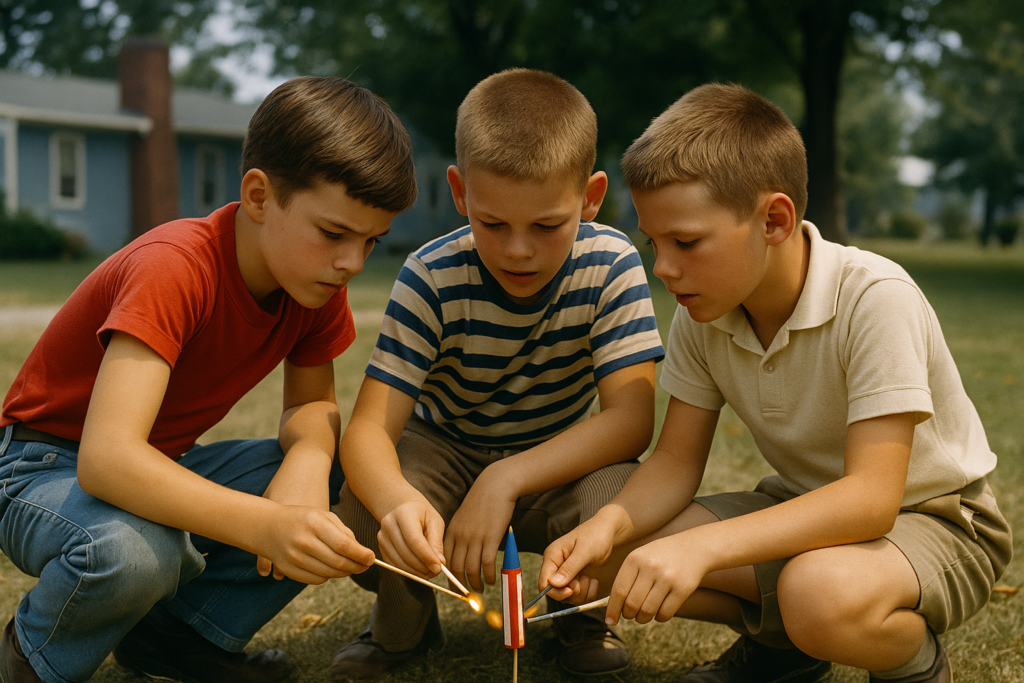
Fireworks were practically handed out to kids in the 1950s. Sparklers, firecrackers, bottle rockets, if it went boom or sparkled, it was fair game. Older kids taught younger ones how to light fuses with matches and toss them before the explosion. Adults might supervise the bigger fireworks, but most kids had free rein. July Fourth was less about rules and more about who could make the loudest bang.
Sparklers can burn at temperatures over 1,200 degrees Fahrenheit, and injuries were common. Missing fingers, singed eyebrows, and minor explosions were just part of the holiday. It wasn’t until the 1970s that firework safety campaigns gained traction. By the 1980s, more states started banning or restricting sales to minors. Today, kids lighting fireworks without supervision could trigger fines, lawsuits, or serious injury. But in 1955, it was just another thrilling summer night.
11. Swimming Unsupervised in Lakes and Rivers
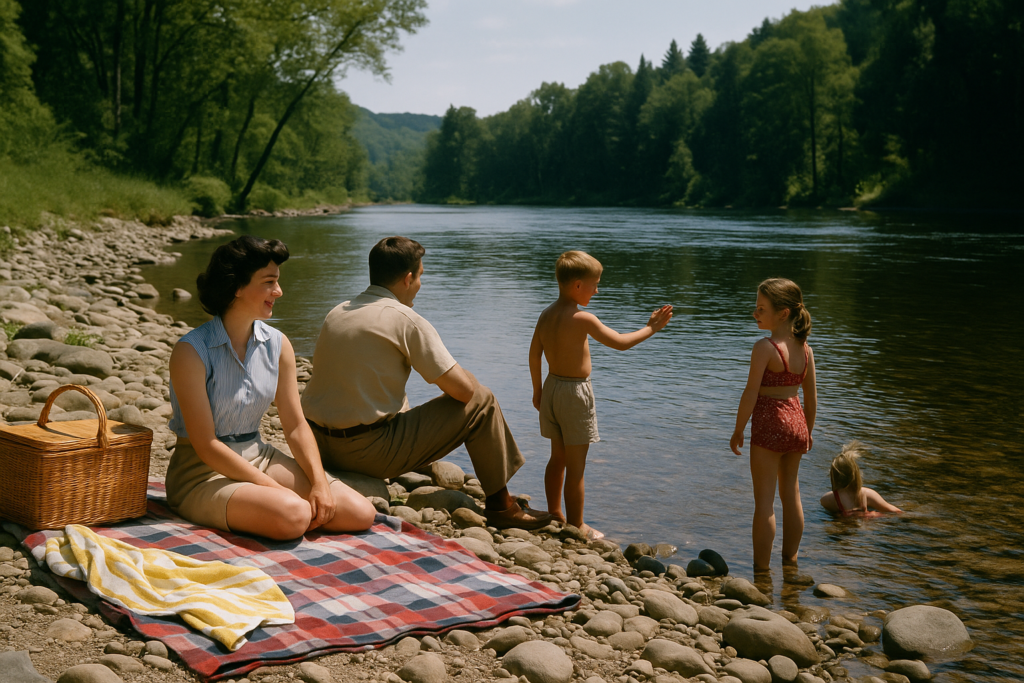
Summers in the 1950s meant long, unsupervised swims in lakes, creeks, and backyard ponds. Kids rode their bikes to the nearest water hole, stripped down to their swimsuits, or sometimes just their underwear, and jumped in, no lifeguards, no floaties, and no parents. You learned to swim from an older sibling, a neighbor, or by trial and error. The buddy system was about as official as it got.
Drownings were tragically common, but rarely blamed on negligence. It was seen as part of growing up. By the 1980s, public pools with certified lifeguards became more accessible, and water safety became part of school curriculums. Today, most parents wouldn’t dream of letting a child swim without adult supervision and Coast Guard-approved flotation gear. But in 1955, swimming unsupervised was just another way to cool off, and test your courage.
12. Skipping Sunscreen Entirely
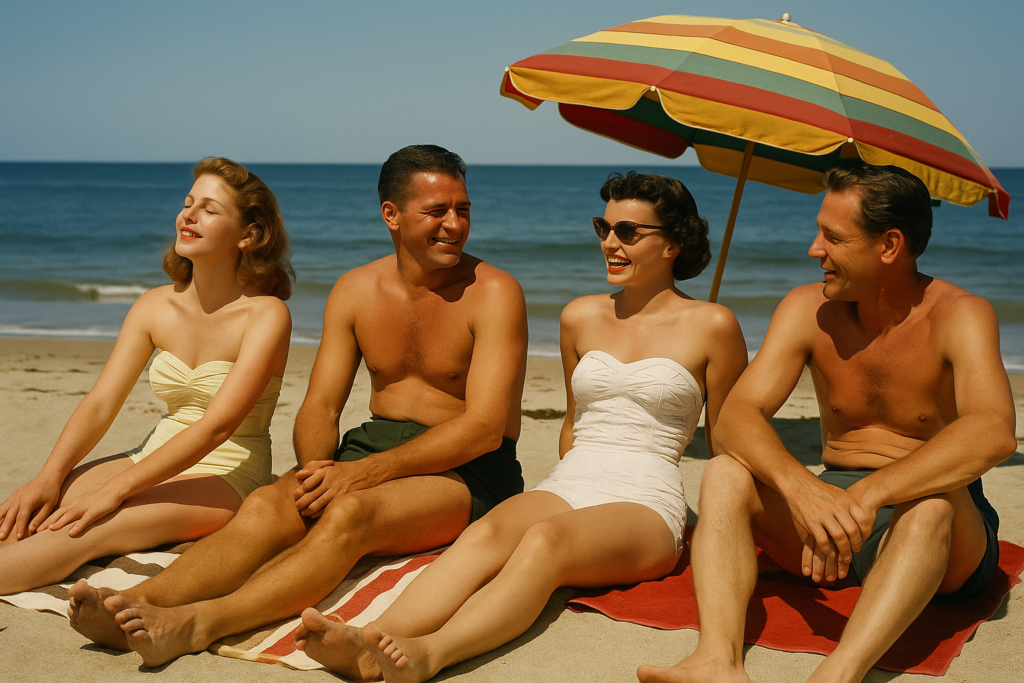
In the 1950s, sunscreen wasn’t just optional, it was practically unheard of. Kids slathered on baby oil and iodine to attract more sun, not block it. A tan was considered healthy, attractive, and even a sign of affluence. The most iconic ad of the time featured the Coppertone baby having her swimsuit pulled down by a puppy to reveal tan lines. Sunburns were treated with vinegar, butter, or a layer of menthol-scented Noxzema.
SPF ratings didn’t appear on bottles until the 1970s, and the connection between sun exposure and skin cancer wasn’t widely accepted until years later. Dermatologists today stress the importance of daily sun protection, even on cloudy days. But for a kid in 1955, the only goal was to come back from summer vacation as bronzed as possible. Pale skin was for bookworms. A peeling nose? Just proof you had a great time outside.
13. Hitchhiking With Strangers
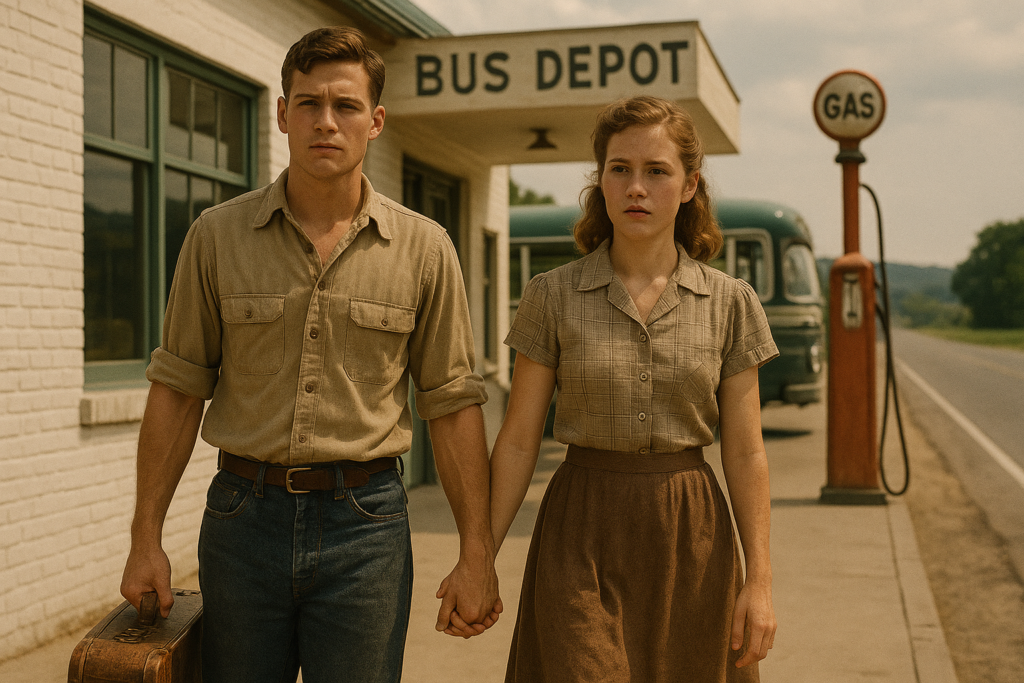
In the 1950s, hitchhiking wasn’t seen as dangerous or reckless, it was just another way to get where you were going. Teenagers stuck out their thumbs on the side of the road, backpacks slung over their shoulders, trusting that a friendly driver would give them a lift. Some kids even hitched rides to school or sports practice, especially in rural areas where buses were scarce. Parents didn’t panic. In fact, many saw it as a practical solution and a rite of passage.
Hitchhiking was romanticized in movies and magazines, viewed as adventurous rather than risky. While some folks raised an eyebrow, the general feeling was that most drivers, and most kids, meant no harm. It wasn’t until a wave of high-profile crimes in the 1970s that public perception shifted and “never get in a car with a stranger” became the golden rule. Today, allowing a child to hitchhike would likely make national news. But in 1955, it was just another chapter in a summer story told by flashlight at a sleepover.
Wait, We Survived All That?
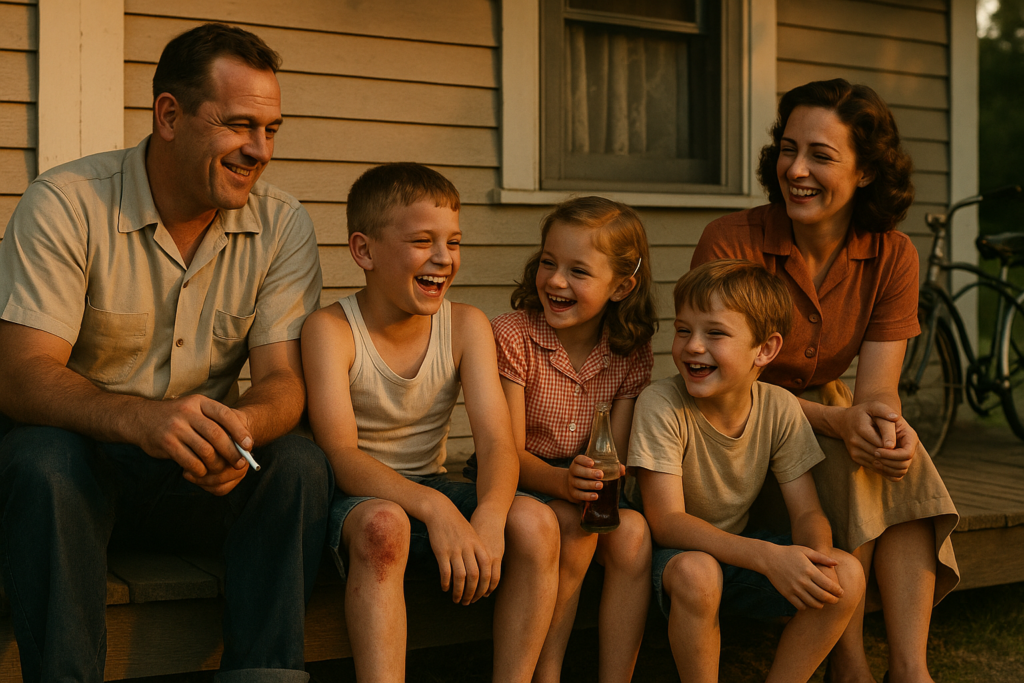
Looking back, it’s hard to believe what passed for “normal” childhood in the 1950s. From riding loose in the car to lighting fireworks with bare hands, kids were expected to take risks, show independence, and learn through trial and error. Parents trusted their children, and the world around them, a lot more than we do today. There were fewer rules, fewer safety warnings, and a whole lot more scrapes, bruises, and wild stories that still get passed around at family reunions.
But for all the dangers, there was also a raw kind of freedom. Kids built resilience by facing the world head-on, whether it was dodging lawn darts or walking to the store with cash in hand. Today’s parents might gasp at the thought, but for the generation that grew up with metal slides, smoking adults, and radioactive toys, it was just part of growing up. And while we wouldn’t trade today’s safety standards, sometimes we can’t help but wonder, were we a little tougher back then, or just lucky?
This story, 13 Things Kids Did in the 1950s That Would Horrify Parents Today was first published on dailyfetch.net.


